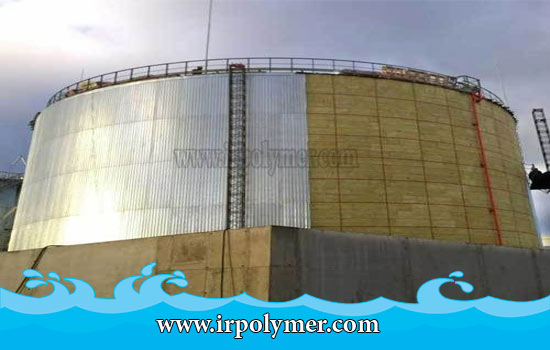Water tanks have various applications in different sectors such as homes, buildings, large hotels, all factories, agriculture, etc. Sometimes, tanks are insulated to preserve water quality, increase tank longevity, repair tanks, or for other reasons. Let’s explore the types of water tank insulation further.
Types of Tank Insulation
Next, we’ll examine the various types of insulation materials.
Epoxy Tank Insulation
Epoxy tank insulation is a two-part epoxy coating and is typically used for metal water tanks (iron and galvanized tanks) and concrete pools or tanks. Epoxy insulation provides acceptable resistance as long as it is not deeply scratched, effectively acting as a water source insulator. It has a high application speed but requires several days to dry. Resins suitable for drinking water can be used for water tank insulation, ensuring water quality. Epoxy insulation facilitates easy cleaning inside the tank as contaminants are easily removed from its surface. Note that this type of insulation can be used inside large tanks where access for one person is required or modular tanks that are covered with panels prior to assembly.
Polyurethane Tank Insulation
In terms of chemical resistance and many other aspects, polyurethane tank insulation is similar to epoxy but has the advantage of higher physical strength due to its greater elastic properties. This type of water source insulation is also used to cover external parts of sources placed in outdoor environments.
Polyurea Tank Insulation
This insulation is also two-part and has high resistance to corrosion. It is often used for tanks that store brackish and corrosive water, albeit at a higher cost compared to polyurethane and epoxy insulation.
Thermoplastic Tank Insulation
Among thermoplastic compounds, polyethylene and polypropylene are commonly used as water tank insulation. They have high chemical resistance, preserving water quality to a considerable extent. This type of water tank insulation prevents contamination and has acceptable physical resistance. To apply them to the water tank surface, they are initially cut into pre-determined sheet dimensions and attached to the tank body using bolts, with the bolt surfaces finally covered with polyethylene (or polypropylene) coating. Gaps between the sheets are filled using thermoplastic rods via a plastic welding machine.
Membrane Tank Insulation
Available in rolls and various dimensions, membrane tank insulation is dual-layered, with the underside capable of adhering to the tank surface and the top surface having suitable chemical resistance as water tank insulation. Its application on the tank surface is quick and is carried out using special adhesives.
Composite Tank Insulation
A combination of resin and fiberglass, this insulation is usually manually applied in multiple layers on the tank surface. It also has good chemical resistance and is suitable for repairing tanks susceptible to corrosion.
In this article, we aimed to cover coatings primarily used as water tank insulation. Many types of insulation such as glass coating, glass flake, rubber, etc., are available, primarily used for chemical storage tanks or reactors.




